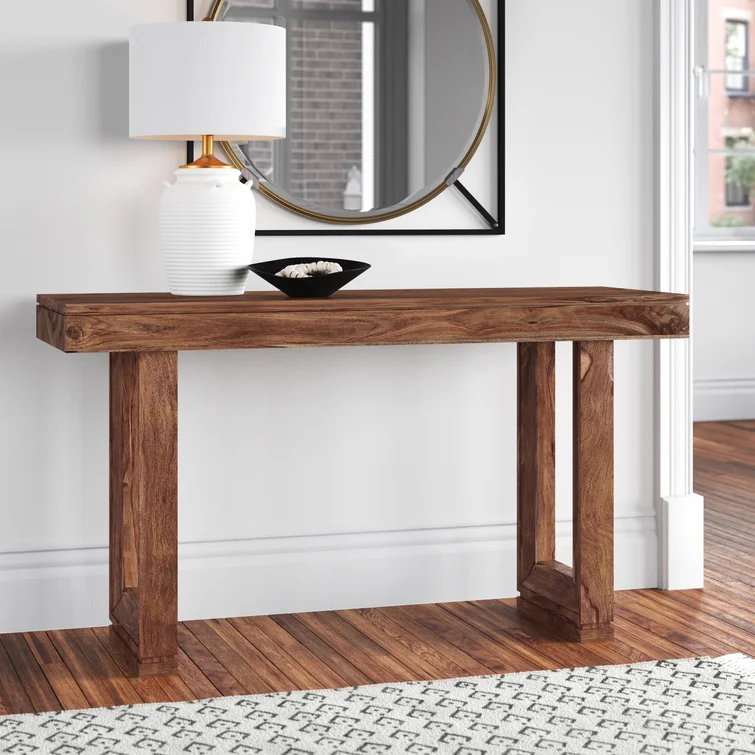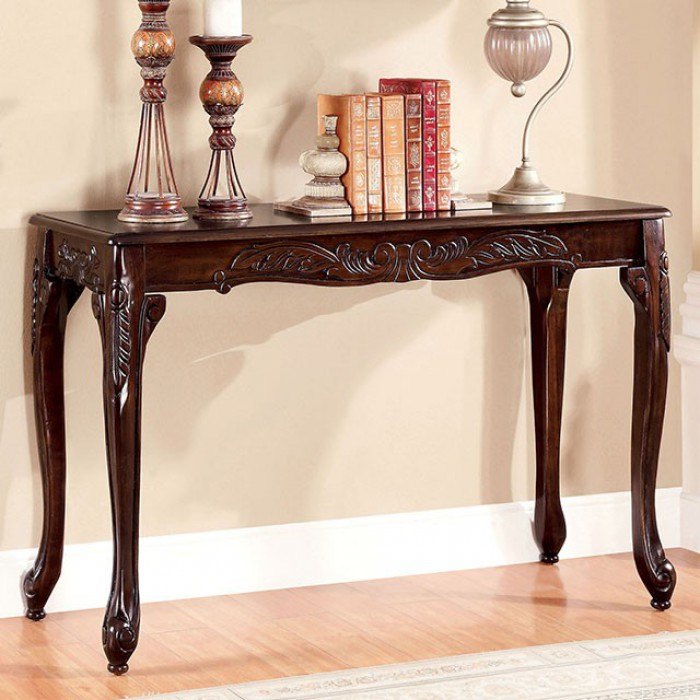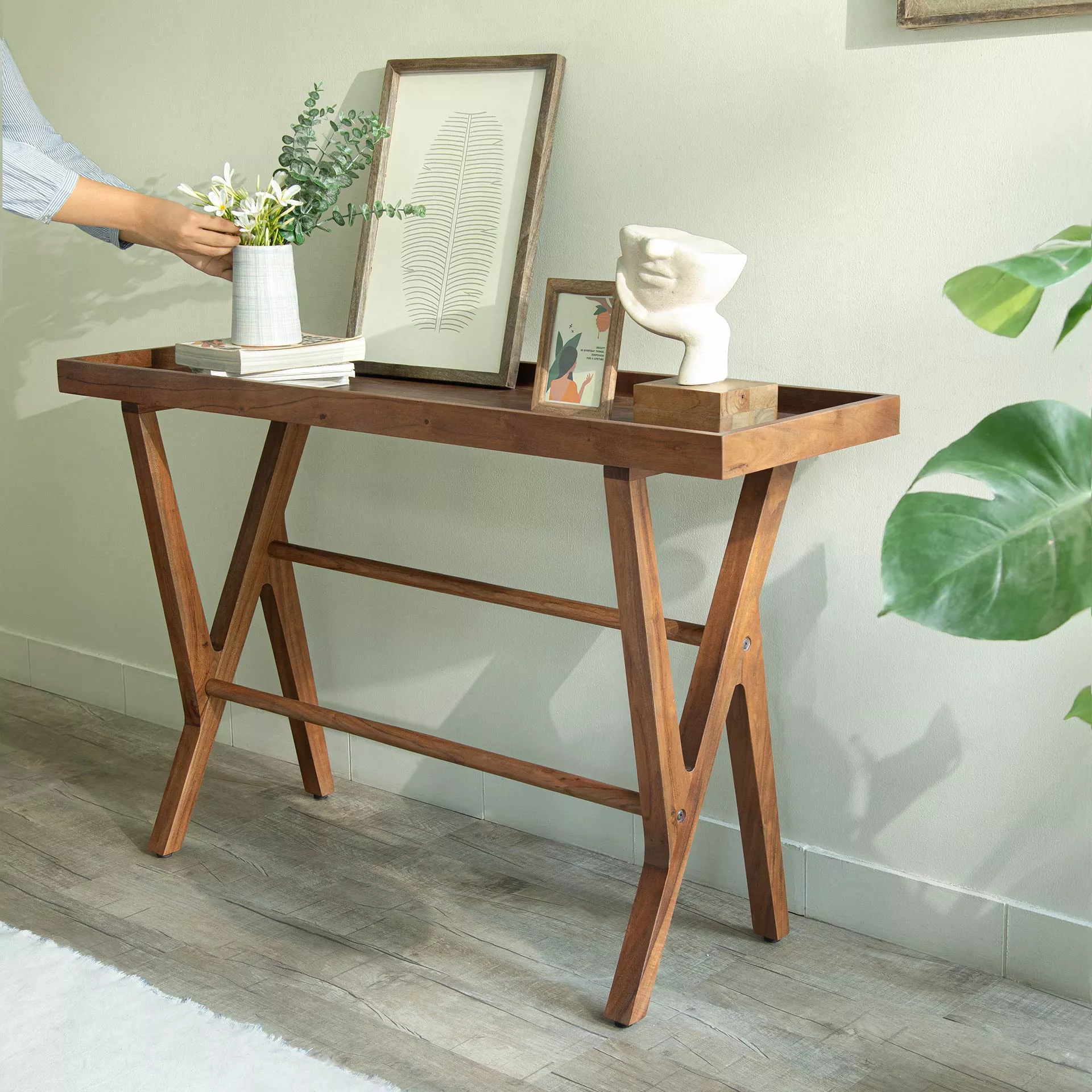Wooden Console Table

A console table often takes pride of place near the entrance into the living room, making a fabulous first impression. Its strategic placement provides an ideal spot to showcase cherished artifacts, family photos, or statement decor pieces that immediately draw the eyes and set the tone for the room's ambiance. Typically, a console table is designed to sit against a wall, creating a seamless connection with the room's architecture. It may even be connected to the wall itself, appearing almost like an extension of the room's design. This connection ensures stability and allows for creative possibilities in arranging the space around it. In its traditional form, a console table is a small, often narrow table that can be either attached to the wall, supported by two legs, or set as a freestanding piece against a wall. The design possibilities are vast, offering flexibility in how it complements the existing decor. Its traditional role is to serve as an elegant and functional surface for displaying decorative items. Console tables are incredibly versatile in terms of placement. They can be narrow and long, fitting snugly against the wall or even positioned behind a sofa. This adaptability makes them a valuable asset in various settings, allowing for creativity in arranging furniture and decor. Placing a console table behind a sofa, for instance, creates an additional surface for showcasing decorative elements like lamps, vases, or sculptures. Wooden console tables, in particular, enjoy widespread popularity in homes, offices, and commercial spaces alike. The demand for these tables can be attributed to the inherent warmth, durability, and timeless appeal of wood.


